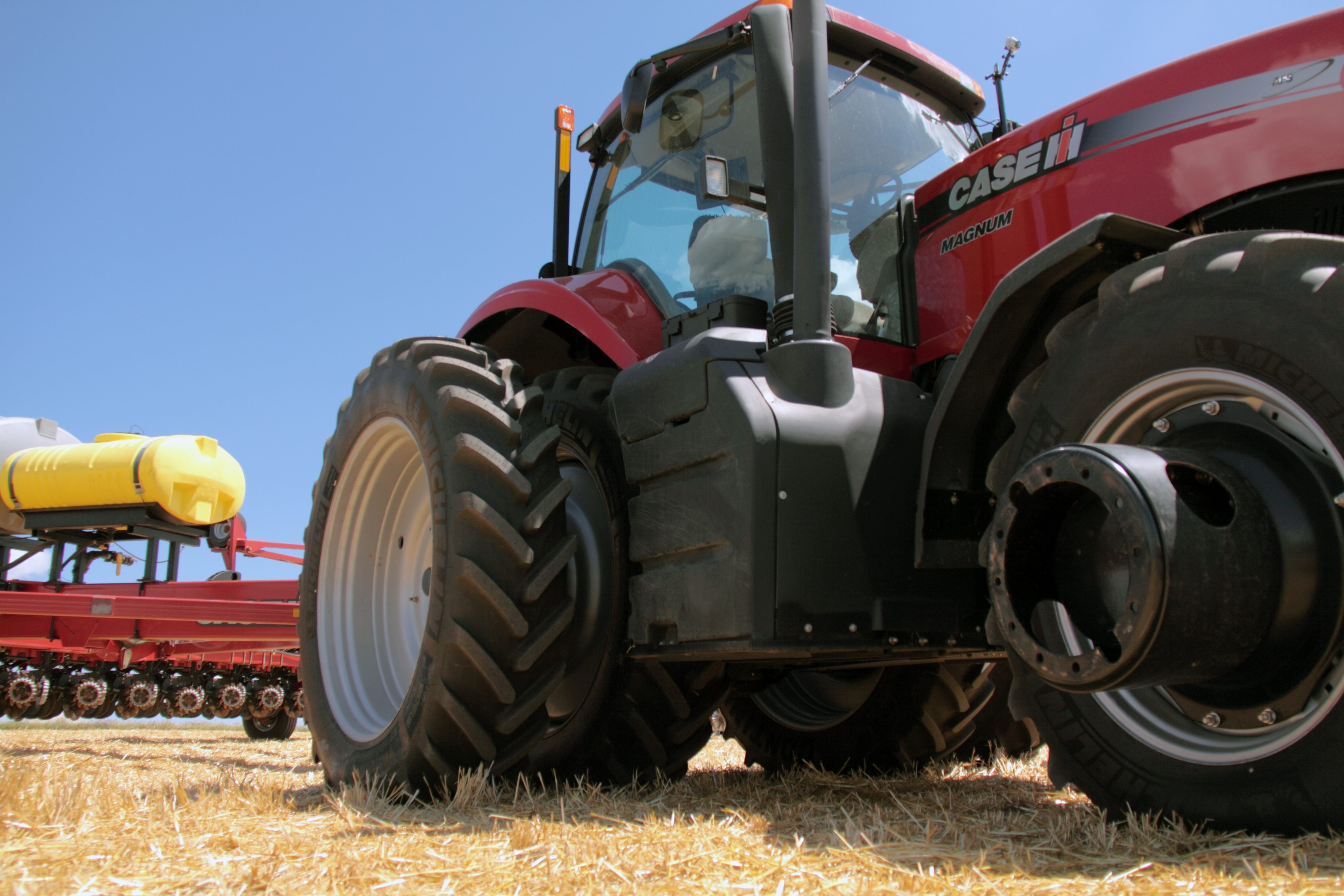Benefits include better traction, less compaction and better fuel efficiency
Whether it’s for tractors, combines, sprayers or other equipment, choosing the right tires is a critical decision that depends on conditions on your farm.
Start at the beginning
Selection should begin when new machinery is being ordered. The most important factors are equipment weights and what the machine will be used for. Producers need to know the final configuration to ensure they have the right tires for the job.
Read Also

Fertilize the crop, not the atmosphere
There’s a lot of interesting science about how nitrogen behaves in the soil. If you have a techie disposition, you’ll…
He says the key is to select the tire to fit the machine before you purchase it, using the expertise of the equipment sales team and resources from companies like Michelin.
“We have long-term relationships with not only the end-user but also some of the equipment and implement retailers or sales teams. They will often call and review what the best tire options might be for the equipment plus any add-ons. If this isn’t considered at the time of purchase, the farmer may be looking at a costly change after the fact,” says Pantaleo.
“If we get to the farm and are making recommendations on higher tire pressure and the farmer is disappointed, it is usually because the tires he bought are undersized for the equipment he eventually ended up with,” says Pantaleo.
A good rule of thumb is to select the tire that will provide the lowest possible pressure which can carry the load, which will give the largest possible footprint, reducing soil compaction and environmental impact.
The trouble with stubble
Today’s crop varieties yield better partly because they stand up better, which in turn means stronger stubble.
“When you are getting ready to seed into some of the stubble today, farmers are driving over stalks left in the field that can be as hard as little spears, and moisture makes it worse. If there is moisture in the stalks and they freeze, they are even harder on the tires,” says Pantaleo.
“When looking at stubble resistance in tires there are a number of factors to consider, such as absorption qualities and the size of the footprint. The larger the footprint, the greater the area over which to distribute the weight and therefore the ground pressure in the footprint will be smaller and less damage is done to the soil and the tire,” says Pantaleo.
Selection decisions — environmental
Start by looking at the size of tires currently on the equipment and then explore options are available to accommodate the conditions on the farm. This might include specific load-carrying requirements or environmental issues. Are there any such as poor traction, increased soil compaction or decreasing fuel efficiency? What is the cause?
Poor traction and slippage go hand-in-hand. Slippage leads to poor fuel economy and in turn to soil compaction because you are in a smaller area and creating a bigger rut. It then requires more power and more fuel to power out of the rut.
“It’s a matter of having a tire that has maximum flotation but will deliver power to the ground most efficiently. Fuel economy and traction issues are strong indicators that you have the wrong tires,” says Pantaleo.
Selection decisions — type of tire
The sale bin should not be the first place to look when choosing a tire. Consider not only cost, but value. Select the tire that works best for specific needs to realize savings in fuel efficiency, damage and replacement costs.
“When deciding between bias and radial tire options, the cost for radials will be about a third more expensive but they offer two to three times the lifespan of a bias tire. There should also be fewer issues with tire life, slippage, compaction and fuel efficiency with radial tires,” says Pantaleo. “The return on investment is likely better for radials, depending on your specific farming needs.”
Cutting-edge technology
Michelin pioneered Ultraflex tire technology just over 10 years ago. “Compared to a standard radial tire, Increased Flexion (IF) tires allow a farmer to run 20 per cent higher loads with the same pressure or the same load with 20 per cent less pressure. This gives them some real flexibility when making choices in the field,” says Pantaleo.
Why the major change in technology?
“The machines are getting bigger and heavier but restrictions on farm equipment use of public roads continue to tighten, especially in Europe. This technology allows them to continue to move their equipment while also giving them the efficiencies that allow them to do their work,” says Pantaleo.
When is it time for a change?
Operational problems are often the first sign that tires need replacing.
“When producers are seeing tread depths that are too low, it usually means there is more slippage. Tires are then vulnerable to damage, compaction and deformation. They will likely start to see a reduction in fuel efficiency and decide it is time to replace the tires,” says Pantaleo.
When it’s time to replace, producers should take the opportunity to re-evaluate how they are performing and any issues that may have been caused by inadequate tires in the past. This is the most cost-effective time to look at making a change.
Pantaleo says that ideally, producers should make the decision before harvest begins.
“Don’t forget about your tires. They are probably one of the most important components on your vehicle and is usually the most under-rated. Make sure you are ready for whatever the season has in store for you.”










